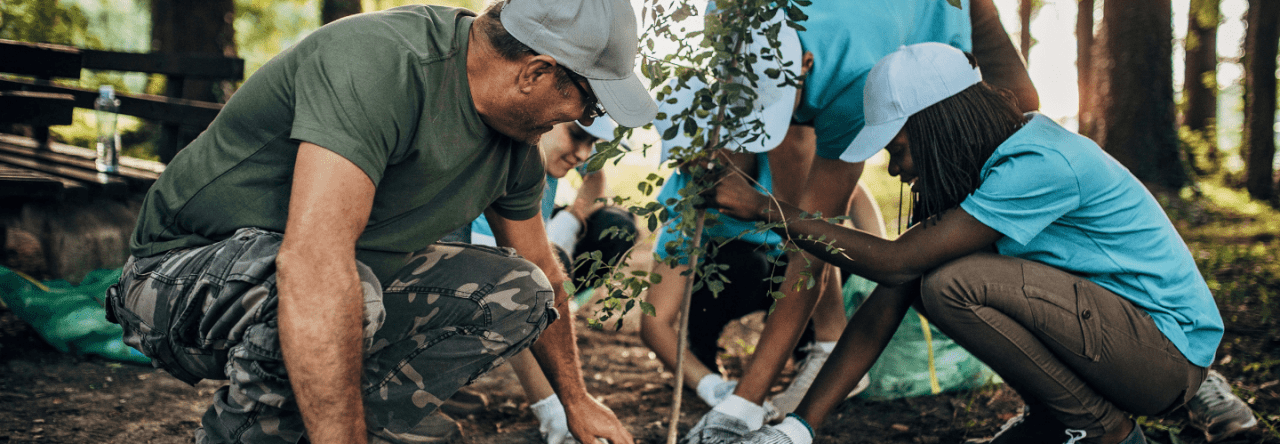Health and Safety, those dreaded words. The reason to stop, an excuse not to do something. I’m sure anyone who reads this blog gets that same sinking feeling when someone uses health and safety as an excuse to make sure something does not take place. I hope to share some of the useful Volunteer Health and Safety information that has been shared with us at TeamKinetic.
I must make it very clear from the very start; I am not a health and safety expert and any advice I offer is either from other sources who I will aim to credit or my own experience. I also want to open this debate to other Volunteer Managers or those who have real Volunteer Health and Safety experience. Please share your knowledge and best practise with our audience. No advice will be ignored and all will be welcome.
Anyone who wishes to correct any mistakes or offer further clarification can always e-mail me at info@teamkinetic.co.uk and just put Volunteer Health and Safety in the subject field and I will happily add to this post.
Volunteering by its very nature involves people undertaking roles and responsibilities that often lack clear description, they are not employed and as we have found, people have the most amazing ability to do the craziest things! All this means you can take nothing for granted.
So what have we learnt whilst operating TeamKinetic?
From the point of view of a technology provider who talks on a very regular basis with those that work at the coal face with volunteers and opportunity providers day to day, its never dull!
We must first establish some key distinctions so it is clear who is responsible or has a duty of care during the volunteer process (I will try and keep to a minimum the Health and Safety terminology). I must also state that although this advice might be applicable to most volunteer situations it is written based on the volunteers being deployed via a VolunteerKinetic powered opportunity.
From the point of view of a volunteer manager who is brokering opportunities that are often provided by others, we think there are some important issues to consider.
Volunteers and opportunity providers must take all reasonable responsibility for their own health and safety.
This should be made clear in any code of conduct you create.
Although you are acting as a broker of opportunities, the responsibility (duty of care) for ensuring safety at a venue, location or during an activity is that of the opportunity provider. They should have a risk assessment for the activity, public liability insurance to protect volunteers and the people they may come into contact with through the role, and policies and procedures in place that they make you aware of; such as fire evacuation procedures. These basic responsibilities should not just extend to volunteers but all potential people who may be affected by the normal operation of the organisation and opportunity.
This does not fully exclude the broker from any responsibility, and in our opinion, best practice on behalf of the programme administrator is to provide opportunity providers with guidelines. These should offer a set of operating standards an opportunity provider should meet.
University of Manchester Athletic Union have kindly offered to share their Health and Safety Checklist and Public Liability letter. You can use or adapt these to your personal needs. We also suggest a provider code of conduct. This covers the more soft policies around effective volunteer management, and may include some of the following points:
- Ensure someone is available to welcome volunteers, to offer a basic site induction and to be a point of contact whilst the volunteer is on site.
- Make sure volunteers are aware of “comfort facilities” such as staff rooms, toilets and areas to get food or drink.
- Try to speak to a volunteer before they leave, ask for feedback on their experience, and offer a thank you where appropriate for their help.
This is just a couple of ideas, that will hopefully ensure your volunteers stay safe and happy whilst working with your providers.
The End User Licence Agreement (EULA) that all volunteers agree to when they volunteer as part of a TeamKinetic system makes the following clear.
Do not arrange to meet strangers in strange places alone. Ensure you check out who they are and you are happy to attend an opportunity. If you are not sure contact the Administrator.
As people are notoriously bad at reading Terms and Conditions we suggest to volunteer managers to make this point clear to all volunteers, that to arrange to meet a stranger through the internet, even through this service, carries some risk and volunteers should do everything they can to ensure they know where and who they are meeting.
Similar advice should be given regarding what information people offer to share via the internet. VolunteerKinetic is designed to help manage volunteer-to-provider connections. Connections made outside the system can be dangerous and as a manager, impossible to track. So we suggest that volunteers and providers use only the system to communicate.
If a volunteer or provider act in a way that is inappropriate or dangerous, do you as an administrator have a policy and procedures in place to manage complaints, respond to allegations and deal with incidents?
From an organisation’s perspective, the volunteers are considered the same as any other person. Do you have up-to-date policies and procedures, including Safeguarding and Health and Safety and do you have a way to ensure volunteers follow these procedures whilst they are under your management?
Many of these situations are extremely rare and a little forward planning and support from the system administrator can make it easy to share good practice amongst providers. Ensuring that the providers and volunteers follow the advice can be more difficult, but having open channels of communication means that problems are easily reported and dealt with. Encouraging feedback from all participants we think offers a great way to keep on top of potential issues.
Source Material
Volunteer Health and Safety is fraught with potential difficulty and is somewhat open to interpretation. It is with this in mind that I would like to share the following links that I have found useful whilst writing this article. If I can leave you with any advice it’s that good procedures around setting up new opportunity providers and volunteers will ensure many issues can be identified early. Secondly, talking to your providers and volunteers regularly, using the feedback tools available through VolunteerKinetic will offer additional insight and help identify potential issues before they become serious.
http://www.hse.gov.uk/voluntary/further-advice.htm
http://www.hse.gov.uk/voluntary/when-it-applies.htm
http://www.hse.gov.uk/voluntary/manage-low-risk.htm
http://www.hse.gov.uk/contact/faqs/charities.htm
http://www.volunteering.org.uk/component/gpb/whatpaperworkdoineed&qh=YToyOntpOjA7czo2OiJoZWFsdGgiO2k6MTtzOjY6InNhZmV0eSI7fQ==
http://www.volunteering.org.uk/component/gpb/handbooksorpolicies&qh=YToyOntpOjA7czo2OiJoZWFsdGgiO2k6MTtzOjY6InNhZmV0eSI7fQ==
http://www.volunteering.org.uk/component/gpb/riskassessment&qh=YToyOntpOjA7czo2OiJoZWFsdGgiO2k6MTtzOjY6InNhZmV0eSI7fQ==















